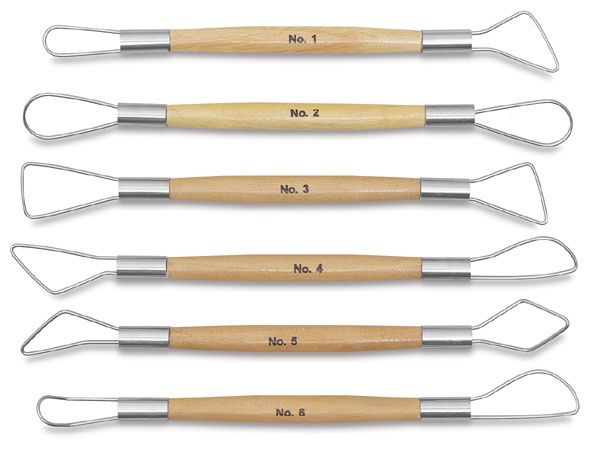How Can I Identify A Piece Of Pottery?
Pottery refers to ceramic materials that have been shaped and hardened through processes like firing, baking, and drying. Pottery includes objects like bowls, plates, cups, vases, and figurines that are made from materials like clay, porcelain, and stoneware.
Identifying details about a piece of pottery can reveal key information about its history, origin, age, and value. Understanding how to examine pottery provides a window into the time period and culture in which it was produced. Evaluating the markings, materials, methods, and aesthetics of pottery gives insight into humankind’s artistic expression and technological innovations throughout history.
Look at the Material
The material used to make pottery provides important clues for identifying and dating it. There are three main types of materials used in pottery making:
Clay – This is the most common material used. Different types of clay are used for different types of pottery. Earthenware uses low-fire clays that turn red, brown or tan when fired. Stoneware uses higher-fire clays and results in gray or brown pottery. Porcelain is made from kaolin clay and fires to a white, glass-like finish.1
Porcelain – This fine-grained, glassy ceramic is made from clay with a high kaolin content fired at very high temperatures. Porcelain clay can be shaped very thinly and results in translucent white pieces.2
Stoneware – This clay has high silica and feldspar content and becomes vitrified and non-porous when fired at high temperatures. Stoneware has a grayish color and feels heavier than other types of pottery.
Examining the exact type of clay material used can help identify the origin and age of pottery pieces based on material technologies and trends through history.
Examine the Glaze
The type of glaze used on a piece of pottery can provide clues about its origin and age. Glazes are coatings applied to pottery that serve both decorative and functional purposes. According to the Encyclopedia Britannica, glazes have been used since ancient times to waterproof earthenware vessels and enhance their beauty.
Some common historic glazes include:
- Salt glaze – A glaze produced by throwing salt into a kiln during the firing process. The sodium from the salt reacts with silica in the clay to form a glossy coating. Salt glazing has been used since at least the 15th century in Germany and England. The glaze produces a subtle orange peel-like texture.
- Lead glaze – Lead compounds mixed with silica were used from ancient Roman times through the 19th century to create glassy, transparent glazes in various colors. Lead glazes were frequently used on earthenware.
- Celadon – A type of green glaze used on Chinese ceramics dating back to the Han Dynasty around 200 BC. It produces a soft, sea-green color and was a popular glaze for centuries.
In addition to indicating the age of a ceramic piece, glazes can also point to geographical origins. Certain glaze materials and effects tend to be associated with different cultures or production regions. Examining the glaze carefully is one of the first steps experts take in identifying and dating antique pottery.
References:
Ceramic glaze, Encyclopedia Britannica
The history of glazing and other specialist finishes, Irish Examiner
Check the Color
The color of the clay and glaze can provide clues about the era and origin of a piece of pottery. Unglazed pottery will show the natural color of the clay, which can vary greatly based on where and when it was produced. For example, ancient Greek pottery often has an orange or red clay while Chinese porcelain is known for its pure white color.
The glaze color also follows trends through history. Blue and white porcelain first became popular during the Yuan dynasty in 14th century China, while the famille rose palette featuring pink and other pastel colors emerged during the Qing dynasty in the 18th century. Distinctive glaze colors can also point to specific production regions, like the emerald green of Longquan celadonware or the mustard yellow glazes of Tang dynasty pottery.
In addition to following stylistic trends, glaze ingredients themselves changed over time as new materials and techniques spread. The development of high-fired glazes, for example, expanded the range of possible colors. By thoroughly examining the clay and glaze colors, you can start to narrow down the possible time period and origin of antique pottery.
Sources:
Study the Design
The decorative designs on a piece of pottery can provide insights into the culture and time period in which it was made (The Timeless Art of Ceramics: From Clay to Culture). Pottery styles and motifs often reflected a culture’s artistic traditions as well as its contact with other societies through trade and migration.
For example, Native American pottery evolved from simple undecorated utilitarian vessels to beautifully painted ceramic works representing cultural symbols and narratives (Pottery). The increasing complexity of designs paralleled the development of more complex cultures. Ceramic decoration thus offers a window into the values, beliefs, and customs of a people.
Studying the motifs and patterns on a piece of pottery alongside knowledge of various artistic styles can help narrow down its geographic and cultural origins. Comparing the techniques used to produce the decoration, such as painting, carving, or applying clay slips, can also provide clues about when and where it was made.
Look for Markings
One of the best ways to identify the origin and history of a piece of pottery is to examine any markings, stamps, or signatures that may be present. These marks were often applied to the bottom or back of pieces to identify the manufacturer. Some of the key markings to look for include:
Makers Marks: These stamped or incised markings usually include the potter’s initials or name. Famed English pottery makers like Wedgwood, Royal Doulton, and Moorcroft frequently marked their pieces, making them easier to identify.
Backstamps: These stamped marks often include information like the company name, location, year produced, pattern name, and more. They became common on many types of mass-produced pottery in the late 19th century. Backstamps can provide valuable clues for dating and attributing unknown pieces.
Artist Signatures: Many studio potters and artisans sign or inscribe their finished pottery, providing a direct way to identify the creator. Look for signatures etched into bottoms or backs, or notice handwritten labels or stickers.
Registration Marks: These small circular marks indicate that a design was officially registered. They often include a date and pattern registration number inside the circle. The presence of a registration mark can help date and authenticate a piece.
By carefully inspecting all markings, stamps, labels, and signatures, you can gain key insights into the origins and background of any antique or vintage pottery.
Research the Process
Production methods and technologies can provide clues about the age and origin of pottery pieces. The earliest known pottery vessels were made in East Asia sometime between 20,000 – 10,000 BC, during the Jōmon period in Japan. These primitive vessels were low-fired and made from clay coils (Medcrave). Higher temperature kiln firing was developed during the Yangshao culture in China around 5000 BC, marking an important step in pottery production (Worldhistory). Ancient Greek pottery production emerged around 3000 BC and became standardized by the 27th century BC. Distinct regional styles also developed, like Proto-geometric from Attica and Corinthian from Corinth (Colorado). The potter’s wheel was invented in Mesopotamia around 3500 BC and allowed much more uniform shaping. Complex decoration like red-figure painting became possible in Greek pottery thanks to standardized shapes from the wheel starting around 530 BC. Romans perfected thin-walled pottery and used molds to mass-produce certain pieces. Medieval pottery shifted towards functional kitchenware and was locally produced. The 18th century saw renewed interest in more refined pottery with technological advances like porcelain and transfer-printing. Examining the clay quality, construction method, decoration, and other details can reveal approximate age and origin for pottery artifacts.
Consider the Shape
The shape of a piece of pottery can provide important clues as to its cultural origins and intended function. For example, ancient Greek pottery came in many standardized shapes that were closely associated with particular uses. There were large storage vessels called amphorae for holding wine, olive oil, and grain. Low, flat dishes called kraters were designed for mixing wine. Elegant kylix cups with two horizontal handles were popular at drinking parties. The oinochoe jug was used to pour wine at gatherings.
According to research, potters over 40 years old in many traditional cultures generally have mastery over the full repertoire of vessel shapes their culture produced (Cultural transmission and perception of vessel shapes). The specific forms point to the values and customs of that society. For instance, Greek pottery emphasized vessels for communal feasting and drinking wine, reflecting the popularity of symposia. Examining the array of shapes can reveal a lot about daily life.
Beyond ancient cultures, vessel shapes and purposes vary widely across places and times. For example, porcelain teacups emerged in China to suit the tea drinking culture, while Turkish coffee required small cups with no handles. African terra cotta vessels were often large and rounded for storing grain. The shapes and forms of historical pottery illuminate the distinctive cultural habits and needs of each society.
Examine the Condition
The condition of a piece of pottery can provide important clues about its age and value. Signs of use and wear indicate the piece is old and authentic, while a pristine, perfect condition suggests the item may be newer or a reproduction. According to experts, “Mint condition indicates the piece is perfect with no chips, cracks, restoration, or repair.”
When examining condition, look for any chips, cracks, crazing, staining, fading, repairs, or restoration work. Pay attention to areas that are more susceptible to damage like rims, feet, handles, and spouts. The more intact and pristine a piece is, especially on fragile areas, the more desirable and valuable it will typically be.
Well-worn surfaces and utensil marks on functional ware like bowls and mugs suggest daily use over many years. This kind of patina of age adds character and value. According to appraiser Dr. Lori, “condition relates directly to quality, manufacturer, age, market interest and other factors.” Her expert advice can help determine how age and condition influence value for antique pottery.
While marks and crazing can lower value, some imperfections like minor nicks and light staining give clues about age and provenance. These signs of use and wear over decades or centuries can actually increase value for genuine antique and vintage pottery. Just take care not to confuse damage from use with damage from improper storage or care.
Sources:
Determine Age of Pottery – Dr. Lori Ph.D. Antiques Appraiser
Conclusion
In summary, there are several key ways to identify antique or vintage pottery. First, examine the material and glaze closely to determine the composition. Pay attention to the color, as certain hues were more common in particular eras. Studying the designs and markings can also provide clues about the age and origin. Researching the manufacturing process and typical shapes of the time period helps date and authenticate a piece. Finally, the condition and signs of use offer insight into its history. With an expert eye and knowledge of what to look for, you can identify pottery finds and assess their value.
Properly identifying antique pottery takes patience and skill. By thoroughly inspecting the material, glaze, color, design, markings, process, shape and condition, collectors can spot rare and valuable finds. An understanding of pottery history is required to recognize subtle clues. With experience, anyone can cultivate an expert eye for antique pottery identification.






